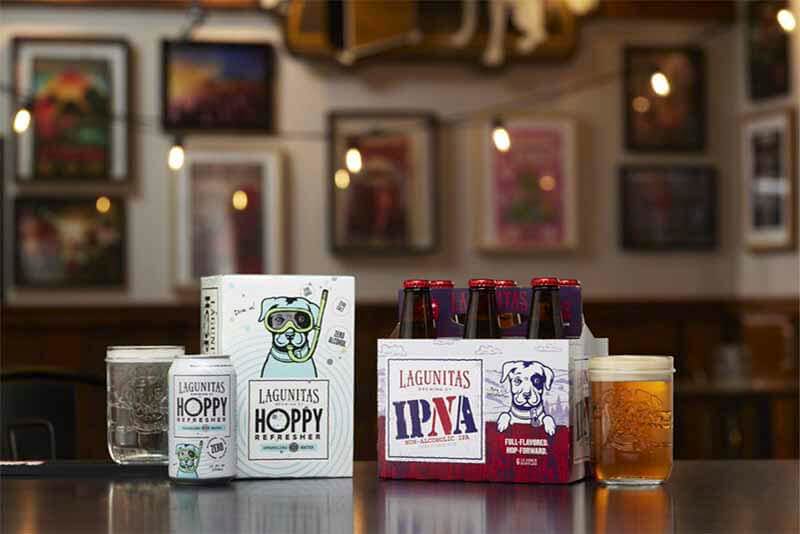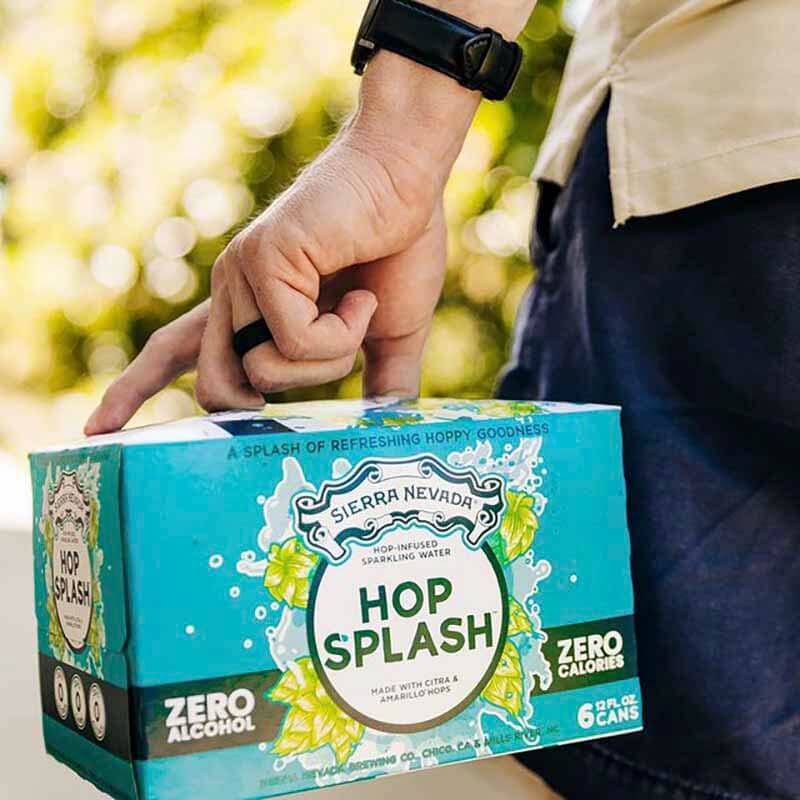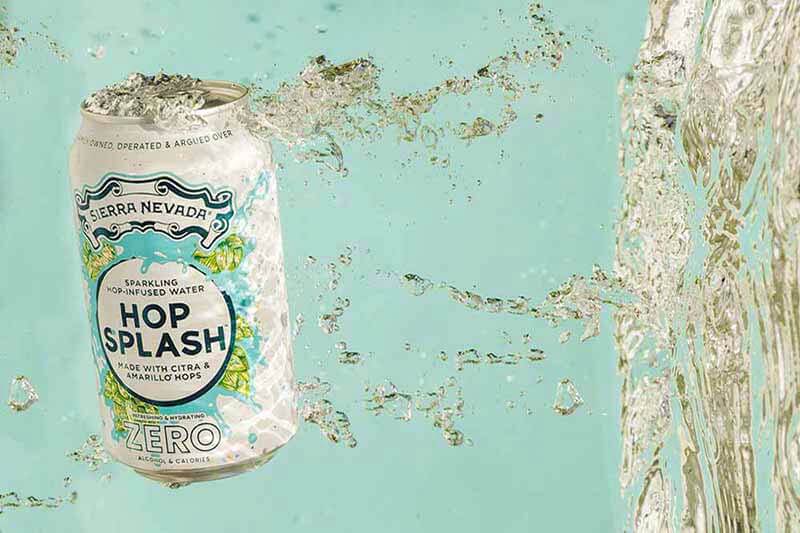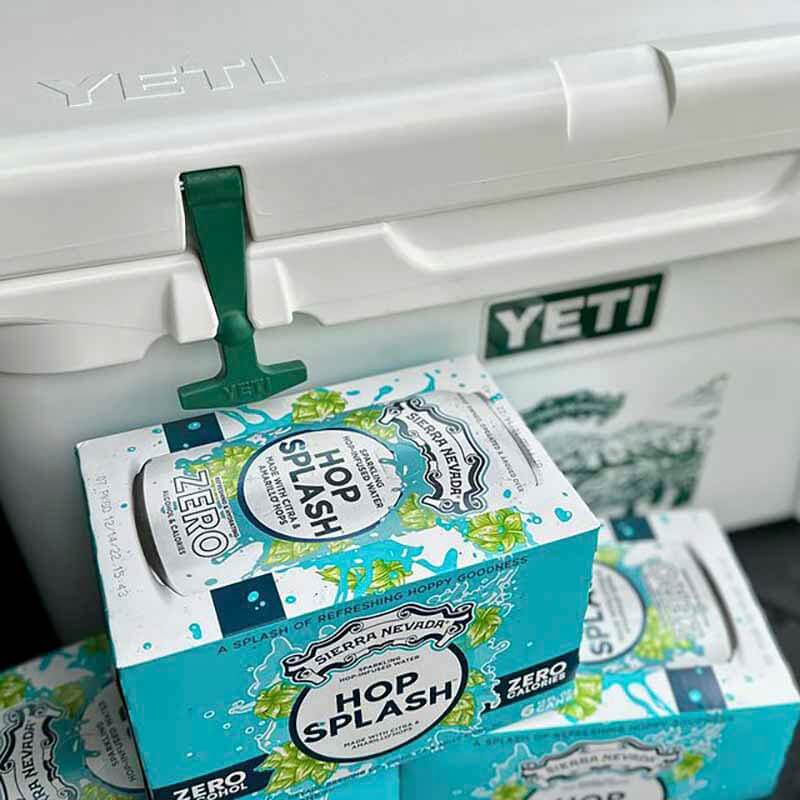Could hop water be the next big trend in craft beer? We think so and so does the industry.
Although still a nascent category (the very first hop water from a brand called H2OPS appeared on the market in 2014), hop water has already grown significantly.
Between August 2021 and August 2022, hop waters generated $5.5 million in sales, surging by 142.5% from the year prior, according to NielsonIQ’s Off Premises data.
And here’s a pretty eye-popping stat: The hop water category climbed to the fifth-biggest growing craft-style beverage in the U.S., with sales increasing by just shy of forty-four percent last year, despite craft beer sales as a whole dropping by 7.2% based on Nielsen data through October 2022.
And just to give you an accurate picture of hop water’s popularity, the styles that ranked above hop water included hazy imperial/double/triple IPA in first place followed by hazy American pale ale, American lager, and hazy IPA.
That’s a pretty significant accomplishment for a drink that doesn’t contain any alcohol and isn’t technically considered a non-alcoholic beer.
For that reason, big players such as Lagunitas and Sierra Nevada are entering the space.
Sierra Nevada released its own version—Hop Splash—in early 2022, after almost two years of research and development. And Lagunitas has been a pioneer in the hop water category for the last four years, releasing Hoppy Refresher back in 2018.
Beyond writing and developing a recipe for a hop water, as a brewery owner you also need to take into consideration how to market the brand.
Since a hop water is technically just hops and water without any alcohol, do you need to place it under a separate brand? Does the look and feel need to be different? What should it even be called?
We sat down with the brand director and chief marketing officer from Sierra Nevada and Lagunitas, respectively, to answer all these questions and more.
(Photography courtesy of Sierra Nevada Brewing Company)
What We’ll Cover in This Piece:
What is the Overall Goal of a Hop Water?

Photography courtesy of Lagunitas Brewing Company
Brewing a hop water can be beneficial for many reasons. The fact that major players such as Sierra Nevada and Lagunitas have both released hop waters should tell you something about why it’s worth exploring brewing one of these hoppy carbonated seltzers.
First and foremost, brewing only beer isn’t enough anymore.
The beyond-beer category is one way to diversify your portfolio, whether that’s through ready-to-drink beverages, hard kombucha, hard teas, or non-alcoholic options.
According to the alcohol e-commerce site Drizly, RTDs within the spirits category gained +400% share year over year from 2019 to 2022 on the platform.
Similarly, at this point, non-alcoholic beer isn’t just another beer trend. In 2021, the non-alcoholic beer market in the United States recorded a revenue of nearly 5 billion U.S. dollars while the non-alcoholic beer industry generated 25.28 billion U.S. dollars in revenue globally, based on a report from Statista.
“Non-alc continues to see significant growth and beverage categories continue to blur,” wrote Paige Guzman, Chief Marketing Officer at Lagunitas, noting that the brewery is very energized by the explosion of the non-alcoholic category. “As we stay innovative with our brews and expand our offerings while staying true to who we are, we’ll stay at the forefront of beverage trends.”
And hop waters can be a potential money maker. Because of their quick turnaround time and small amount of actual ingredients, the margins on making hop waters are pretty reasonable.
At Lagunitas, Hoppy Refresher has shown strong growth in the last four years. According to Guzman, Hoppy Refresher doubled in business in 2020 and 2021 and is growing at more than 60 percent, achieving a 163% CAGR since introduced in 2018.
With a sixty-seven percent share of the hop water style, accounting for over half of the category’s dollar growth, per Nielsen, Hoppy Refresher should stand as a good litmus test for other breweries.
Plus, hop waters attract a new demographic that you might be missing with only offering alcoholic beverages.
“We’re not alone in our love of hops and we felt like there was a real market for our product and we could do it in a way…that was consistent with our values,” says Kyle Ingram, brand director at Sierra Nevada Brewing Company. “We felt hop water was a great platform for us to experiment and find new ways to express even more hop flavor than we were able to achieve in certain beers.”
They even give those of your fans who are hop heads an entirely new kind of drink to consume during all parts of the day.
Who Is the Core Consumer for Hop Water?

Photography courtesy of Sierra Nevada Brewing Company
To understand how to brand and market your hop water, you need to understand the core demographic you’re targeting.
While this will vary from brewery to brewery, those consuming hop water are generally either interested in becoming sober curious, adopting a healthier lifestyle, or moderating their drinking.
“At its foundation, it is that consumer who is looking to moderate their alcohol consumption,” says Ingram. “First and foremost, finding things that can replace that traditional alcohol product or occasion…in a way that still feels like you’re drinking a beer, giving you that same satisfaction and sensation that beers can deliver.”
Hop waters provide a drink that has zero calories, zero sugar, zero carbs, and zero alcohol. In fact, the health claims are probably one of the biggest differentiating factors between hop waters and straight-up non-alcoholic beers and could be important later down the line as NA offerings continue to grow.
Lagunitas had a similar approach describing their core hop water consumer as “those who are looking for alcohol alternatives or are focused on moderation but still want a delicious craft beverage,” wrote Guzman.
Because hop water is an alternative to traditional alcoholic beverages, it opens up other occasions for people to still drink and to still enjoy hops.
“They might just be a hard-core hop head and want all hops all the time but not likely to crack an IPA at noon on a weekday,” says Ingram. “This is the way to get that hop fix during those non-beer-appropriate occasions. They just want more hops in their life and [a hop water] can help solve that.”
Basically, when you’re looking at the core consumer for a hop water, you’re targeting some of your current consumers while trying to pull in new ones you may be missing by only offering alcoholic beverages.
At least, that was the thought at Lagunitas. “The driver of all our innovations is that at Lagunitas we believe there is a ‘seat at our bar for everyone,’” wrote Guzman, who pointed out that Hoppy Refresher has helped Lagunitas broaden its consumer base. “We are IPA, we believe in IPA, and we will always focus on IPA, but we also want to be sure we have a beverage for everyone… Hoppy Refresher broadens our consumer base, but it also opens up drinking occasions so that there is a craft beverage option in between beers when someone wants to moderate or a delicious non-alcoholic version for someone who wants to abstain.”
The Best Questions to Ask When Branding a Hop Water
Because hop water is an alternative non-alcoholic offering, you need to consider your approach to branding carefully.
Since this is still a nascent category, there aren’t any codified branding rules yet. This means you essentially have the freedom to design a color palette or iconography that fits your brand as opposed to backing into a predetermined industry standard.
Hop waters as a blank slate can be a very exciting prospect.
So while we obviously can’t say for certain what the look, feel, colors, and even name of your hop water should be, we can tell you the important questions to ask to make those decisions.
Starting with: Where does hop water fit in your brand portfolio?
Standalone Brand or Brand Extension?
One question you’ll need to answer is if you want your hoppy water to be an extension of your existing brand portfolio or stand alone as its own brand.
Do you envision your hop water taking share away from your other non-alcoholic offerings? Do you want your hop water to expand in the future to include new flavored SKUs, for example? Or do you predict that your hop water will stand on its own, generating enough sales to be a viable brand?
If you feel that your hop water has the potential to expand into a variety of flavors, hop combinations, and interactions, it may be worth making it a standalone brand.
But if you find that your hop water is just your first non-alcoholic beverage or another NA product to add to your lineup, it might make more sense to keep it all in one brand house.
These are all questions you need to ask yourself to determine where your hop water will fit among all your offerings.

Photography courtesy of Sierra Nevada Brewing Company
To Look Like a Beer or Not to Look Like a Beer?
Once you’ve figured out where your hop water will live, then you can start grappling with specific physical branding specs.
In other words, will your hoppy water stand alone as a carbonated water or sway more towards a beer?
“We had a lot of conversations about how much do we want it to look like a beer versus how much do we want it to look like an everyday beverage like sparkling water,” says Ingram.
For Sierra Nevada’s Hop Splash, the answer lay somewhere in the middle.
“We wanted to have craft credibility, to look the part, to be seen as something that makes sense in the Sierra Nevada portfolio, but we also didn’t want it to be confused with a craft beer,” says Ingram. “We need to make sure people don’t walk past it looking for a non-alcoholic solution and think it’s just another IPA from Sierra Nevada.”
Which is why you’ll not only find hops displayed prominently on the Hop Splash label, but also big splashes of water and words like “ZERO.”
Sierra Nevada crafted Hop Splash to be a sparkling water inside the can and almost look like a beer outside the can.
But to maintain that delicate balance that Ingram mentioned of making sure people understand its an NA offering, Hop Splash also includes very specific callouts on the can.
Which Words Will You Use?
When it comes to defining your hop water, words can carry a lot of weight.
How do you want to describe your hop water?
Again, because this category is so new, the nomenclature around hop water specifically is still a bit up in the air.
For instance, Sierra Nevada calls Hop Splash a “sparkling hop-infused water,” while Lagunitas and a brand called HOP WTR simply use the phrase “sparkling hop water.”
We’ve seen other interpretations such as Hoplark that just use the words “sparkling water.” Or Athletic Brewing Co’s Daypack that utilizes “sparkling water infused with hops.”
Whatever phrasing you do settle on, we recommend staying away from the word “seltzer.”
Seltzer on its own could be a little confusing, causing folks to mistake your hop water for a hard seltzer, for instance.
As your brand portfolio continues to grow, separating your NA options from your alcoholic ones will be pretty important. You want to make sure that your hop water is seen as an NA offering and not confused with being a ‘hard’ one.
On that note, you might want to consider adding additional targeted information onto your packaging and into your marketing materials.

Photography courtesy of @lagunitasbeer | Lagunitas Brewing Company
How Will You ‘Zero’ in on Health Claims?
Hop waters in their purest form have zero calories, zero carbs, and zero alcohol. Tell people that right up front.
“We also wanted to make sure we were hitting on those refreshment cues that are important in the sparkling water category as well as flavor indicators and calling out the non-alcoholic piece with big, prominent ‘zero alcohol’ and ‘zero calories,’” says Ingram. “We wanted to take advantage of the fact we can make claims like refreshing, hydrating on the pack, which we couldn’t do with beer.”
With Hop Splash, the front of the can includes words such as “Refreshing & Hydrating,” “Zero,” and “Alcohol & Calories.”
Similarly, Lagunitas Hoppy Refresher includes its own version with the word “Zero” in a circle surrounded by “Alcohol,” “Cals,” “Carbs,” and “Gluten.”
Both Sierra Nevada and Lagunitas specially call attention to the health claims of hop waters.
These are differentiating factors of this product and again will go a long way to helping your hop water not only stand out amongst your current alcoholic beers, but also your non-alcoholic ones if you have them.
What’s in a Name?
What’s the one thing you notice in common with the names of all these different hop waters such as Hop Splash, Hoppy Refresher, HOP WTR, Hoplark, and more? Almost all of them include some interaction with the word “hop.”
Be intentional with the name of your hop water. You want your core consumers to know that this is a NA beverage with hops and water. That’s the message you want to share here.
You need to position this beverage as a hoppy non-alcoholic water while also being catchy, right?
“We could have called it Sierra Nevada Hop Water, but it felt a little overly transactional,” says Ingram. “Hey, this is just hop water from Sierra Nevada, whereas we wanted this brand to have its own personality and its own identity that people could relate to.”
Similarly, Lagunitas wanted to include a form of the hop moniker but have fun with it. A recent portfolio-wide rebrand included Hoppy Refresher. “The new design reflects the personality of the brews and brings in the playful, original style that Laguniats is known for,” writes Guzman. “Specifically for the Hoppy Refresher, the new package design leans into the ‘light and refreshing’ aspect of the beverage.”
It’ll be interesting to see how these naming iterations change in the future. Just like with beer names, we can imagine that there are only so many different ways to play on the word “hop.”
But for now, there is still plenty of room in the category to play around with a witty, hoppy name.

Photography courtesy of @sierranevada | Sierra Nevada Brewing Company
What Packaging Format Will You Use?
The last big consideration you’ll need with branding a hop water is the type of packaging format.
Lagunitas originally launched Hoppy Refresher in 4-packs of 12oz bottles but recently brought 6-pack 12oz cans into the fold.
From the beginning, Sierra Nevada knew they wanted Hop Splash to play off the look and feel of a beer, so they launched with their hop water in a 12oz can format only.
Other brands such as HOP WTR, Hoplark, and Athletic’s Daypack also come in 12oz cans.
For the moment, 12oz cans seem to be the preferred format for most hop waters. But that’s not to say that you can’t play around with formatting for your own version.
You’re Only a Hop, Skip, and a Jump Away from Launching a Hop Water
Now that you have the tools to brand your hop water, don’t forget to check out our piece on how to actually brew a hop water.
Whether hop waters have true staying power still remains to be seen, but at the moment they’re pretty hot and you should seriously consider the steps it would take to add one to your own portfolio.
Brew Better Hop Waters (And Beer) With Ollie
A brewery management tool built by brewers and for brewers. Handle everything in your brewhouse from recipe development to cost management. All with one easy-to-use platform. Ready to get back to brewing better beer? Get Ollie Ops or Ollie Order.



